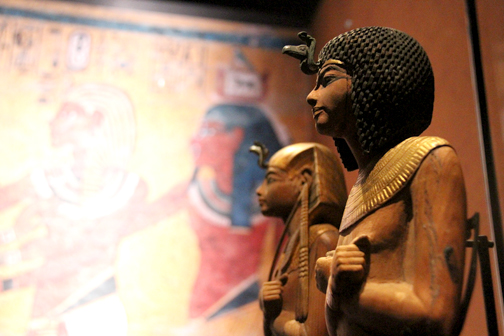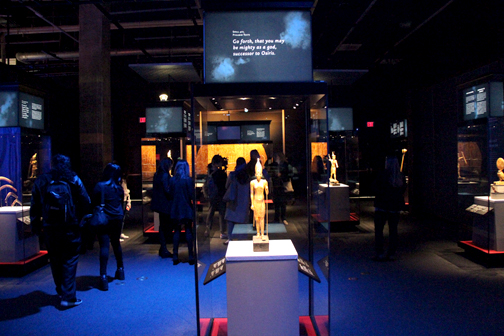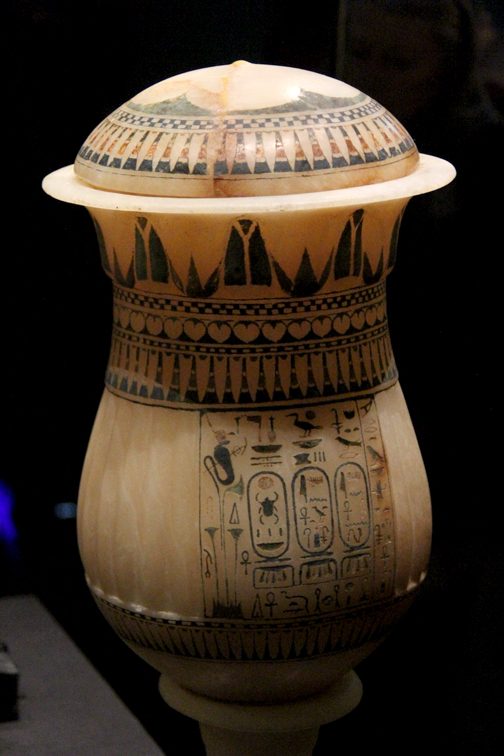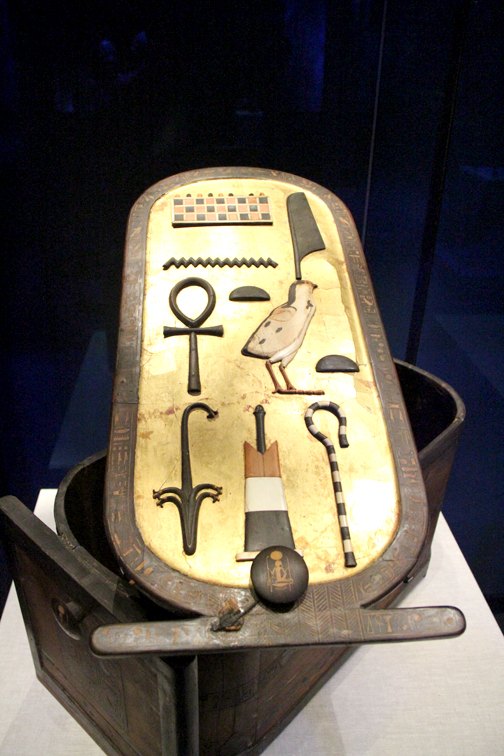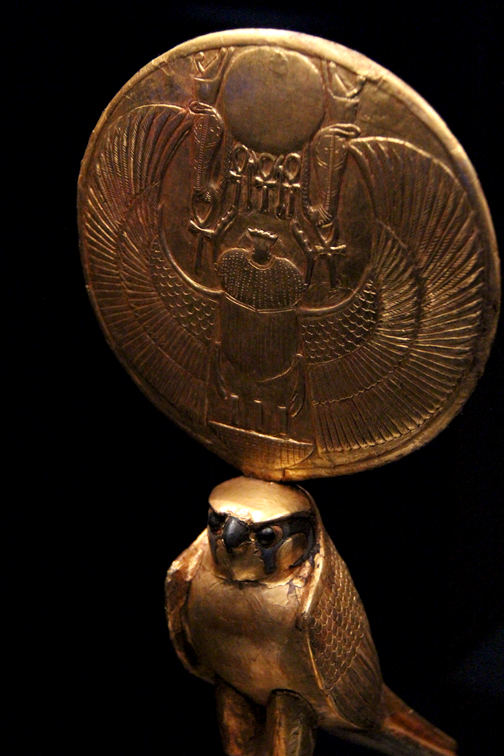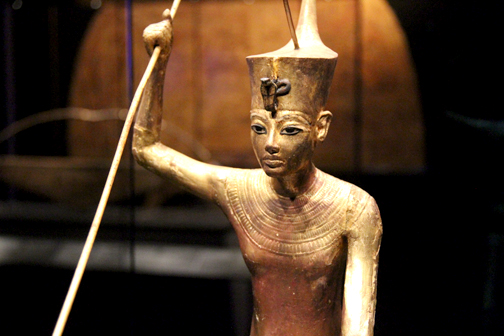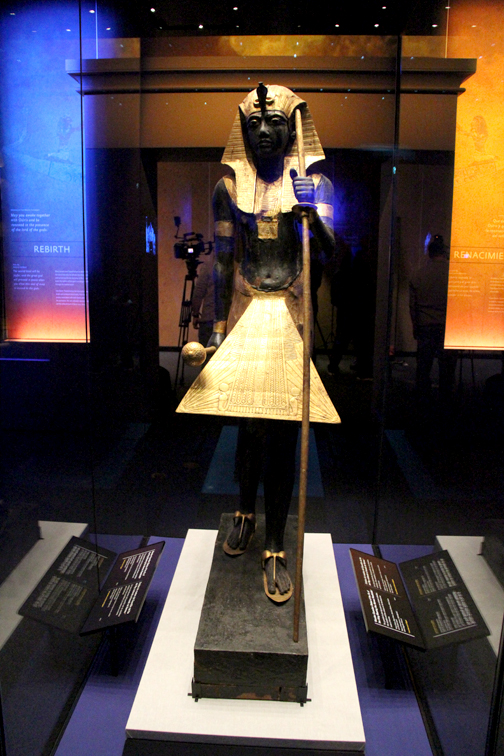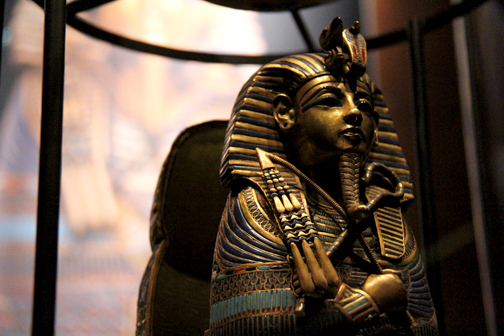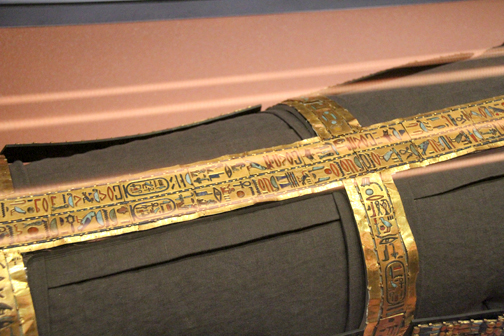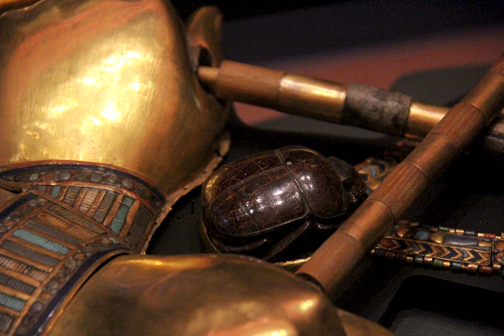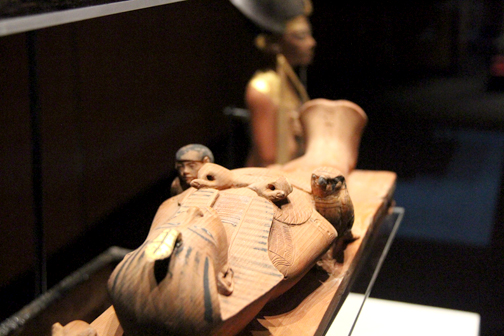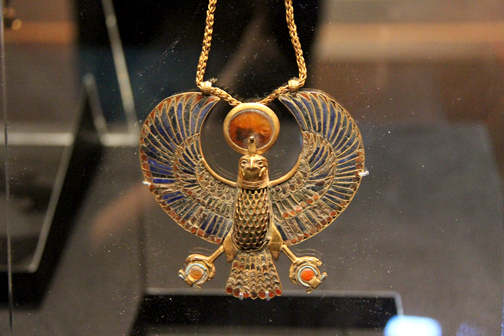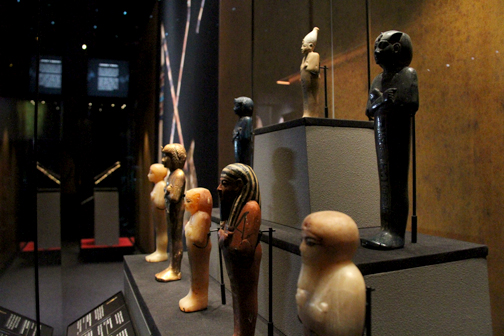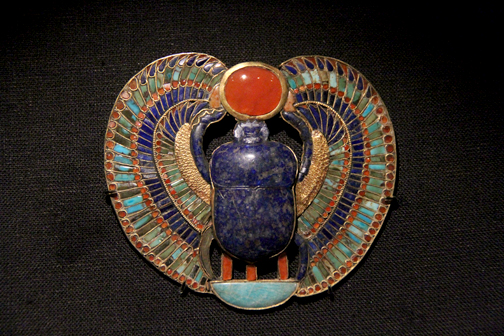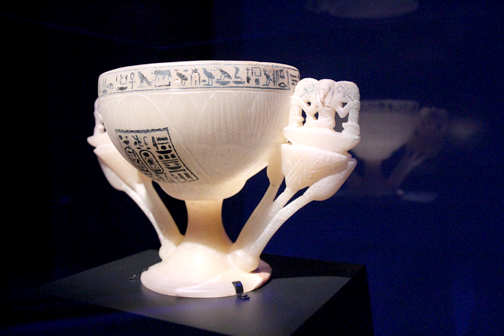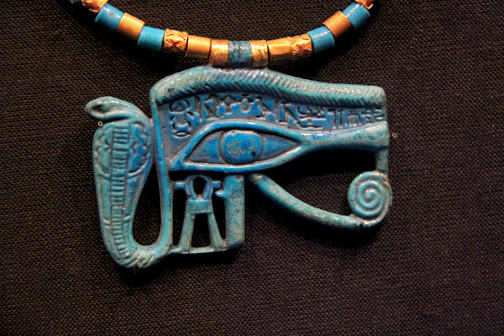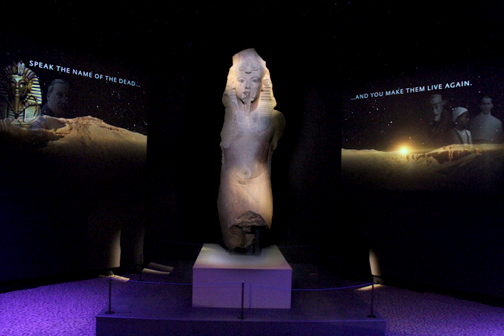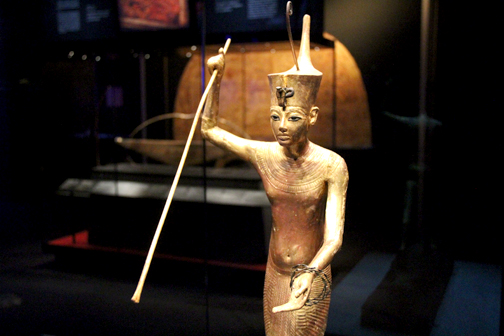
Over 150 artifacts are featured in the exhibit “King Tut: Treasures of the Golden Pharaoh” currently at the California Science Center.
By Charly SHELTON
“Come for my soul, you wardens of the sky! May it see my corpse, may it rest on my mummy, which will never be destroyed or perish.” ~ Spell 89, Egyptian Book of the Dead
The Egyptians were great believers in the afterlife. Those who could afford it were buried in ornate tombs filled with lavish stores of food, weapons, servants and texts to use in the next world, and then sealed inside. The Egyptian Book of the Dead was the key among all texts buried with the deceased because it was a guidebook to the underworld. It not only told the path of how to get there, but also had spells and tricks to help one pass the ultimate tests to prove a soul’s worthiness. Like the Grail Diary from “Indiana Jones and the Last Crusade,” it told the reader when to kneel, when to fight and when to rise in glory, using bits of scripture as spells. This indispensable book has been found in tombs across Egypt, and now serves as a guidebook to illustrate the treasures of the most well-known Egyptian pharaoh – King Tutankhamun.
At the grand opening of the exhibit at the California Science Center, Dr. Zahi Hawass, Egyptologist and former minister of state for Antiquities Affairs, spoke about the find, now nearly 100 years after its discovery, and the legacy of Tutankhamun. Dr. Hawass has written 12 books on the life of Tutankhamun and is continuing to work in the Valley of the Kings where the tomb was found. Dr. Hawass even teased out the possibility of some news coming very soon from one of his digs in the Valley of the Kings. But most importantly he wanted to express that Tut is always available in Egypt, and the country welcomes the world’s visitors with open arms.
“Since he came here in 2005, there’ve been lots of things happening with King Tut. We found out that he had a tutor to teach him; we didn’t know this before. [Through] his DNA and a CT scan we found his family; I found the mummy of his father and the mummy of his mother. Also through a CT scan I found out how he died; he was not murdered. All these new things add to our knowledge that this king is unique. Every year there is something new about him,” Dr. Hawass said. “This exhibit is important because it will tell the people in LA that Egypt is safe, this is the message that Tutankhamen is here for. We need people to come back because it is safe. When Americans come and they see my excavation in the Valley of the Kings, this will encourage people to go home and tell the world that Egypt is safe, and that is why King Tut is in town.”
“King Tut: Treasures of the Golden Pharaoh” debuted at the California Science Center last week as the kick-off to the centenary world tour, leading up to the actual 100th anniversary on Nov. 4, 2022. The treasures will be in Los Angeles until Jan. 6, 2019, and then head off to Europe for an eight-city tour. After the tour is over, the artifacts will return to Giza and be placed in the currently-under-construction Grand Egyptian Museum, where they will remain from then on. This is Tut’s artifacts’ farewell tour.
While Tutankhamun’s mummy and iconic golden coffin aren’t part of the exhibition, many of his grave goods are – more than ever before. Whereas the 1978 King Tut tour featured only 55 artifacts, this tour features more than 150 artifacts, 60 of which have never before left Egypt. It is honestly a once-in-a-lifetime chance to see the treasures of his tomb in LA.
From the Canopic jar topper (ritual jar to protect the removed liver) to board games to a recurved bow and a model boat, all of these artifacts were buried with Tut to help him through the underworld. Above each display, a spell from the Book of the Dead is associated with the artifact to show why this was interred and takes guests through Tut’s journey, meeting some of the gods and monsters he encountered in the underworld. It’s a unique and beautifully reverent way to showcase these treasures to a public largely unfamiliar with Egyptian burial practices.
At the grand opening, LA Mayor Eric Garcetti commented on the nostalgia of Tut. Garcetti recounted his visit to see the exhibition in 1978 as an impactful moment for him and now, to have it back, he hopes it will come to influence young minds to appreciate the history of the boy king and of history overall.
“Perhaps it will inspire [a young girl who comes to the museum] to become an archaeologist, to follow in your footsteps, Dr. [Hawass], as a historian who first writes with a shovel as she excavates. Then a brush, as she moves the dust off a relic. And finally a pen, as she brings blurry history into sharp focus. This is the legacy – not just to see the wonderment of these incredible pieces of art,” Mayor Garcetti said, “but it is also about the mark they will leave, long after those are gone, on our city and all those who walk through our doors.”
The show is open now and runs through Jan. 6, 2019 at the California Science Center. Tickets are available online but a sell-out is anticipated, so tickets should be purchased soon. Be sure to see the accompanying “Mysteries of Egypt” IMAX film, which can be bundled into the Tut exhibition ticket for an extra $5.50. It’s worth it to get both.
For more info, visit CaliforniaScienceCenter.org.

